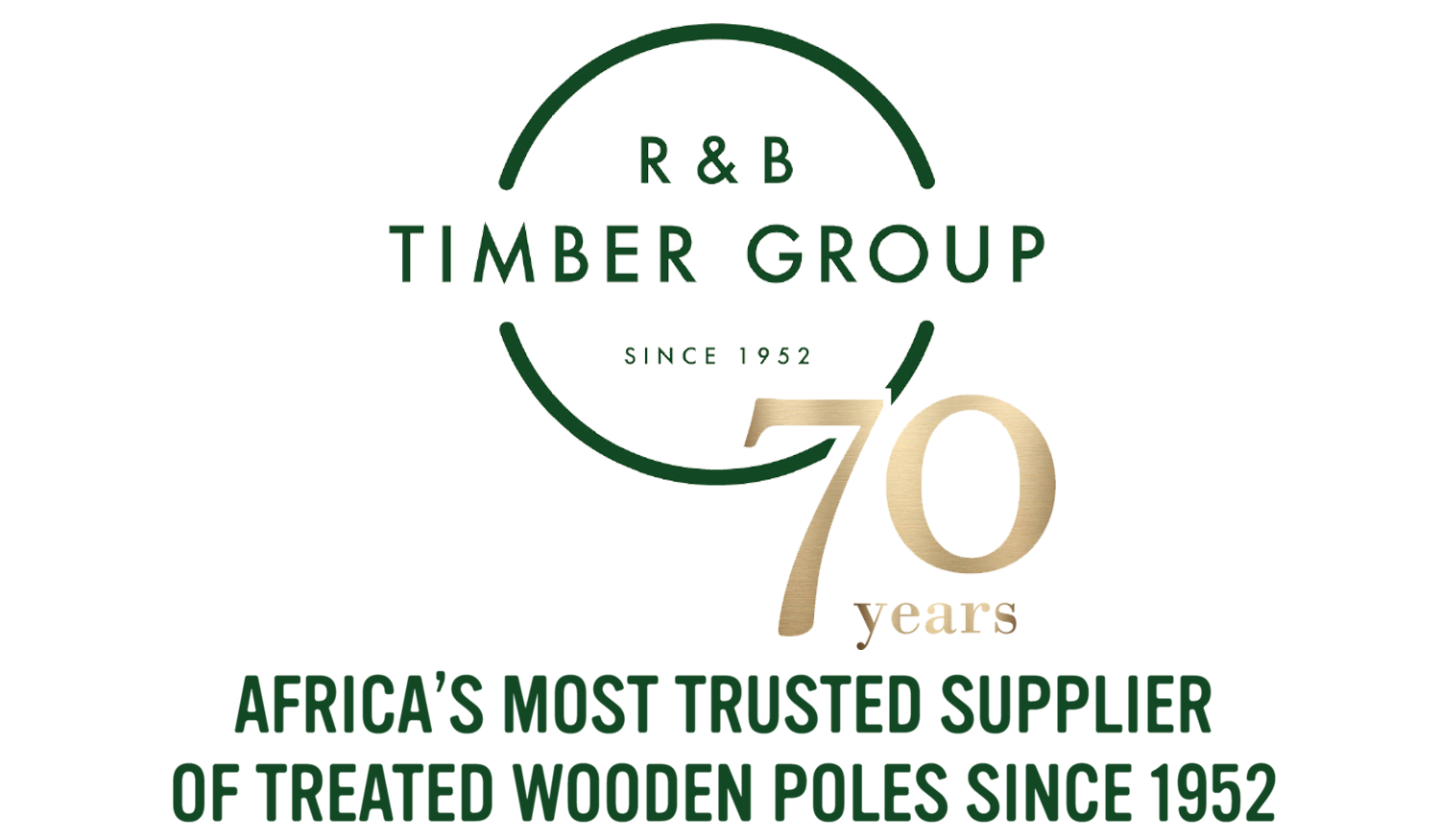Transmission pole prices: How treated timber can save you money
Treated timber poles are used for a variety of purposes and might most commonly be seen in South Africa in use as transmission poles, which relay electrical current from Eskom’s stations to local municipalities, metropoles, and districts.
Transmission poles can vary greatly in their makeup and price, and may also be found in steel and concrete variants. However, the use of quality treated timber can far extend the life of a transmission pole and serve as a cost-effective product at the same time.
At R&B Timber Group, we pride ourselves on the excellence and longevity of our products and are proud to be one of four official suppliers to Eskom.
To understand the makeup of transmission pole prices and how you can save money by using treated timber, it is important to consider the requirements you desire, what additional fixtures may best serve your installation, and what standards you may need to satisfy for national compliance. Our pole yard is ready to deliver your order!
Transmission pole sizes and diameters
Transmission poles may alternatively be called power poles, hydro poles, telegraph poles, or telegraph poles, depending on their use. As such, their measurements in length from 1.5m to 13m, and top diameters from 80 to 220mm.
Timber can be finely designed to fulfil these requirements and using pressure treatments can endure far longer in inclement weather and difficult terrain when compared to other counterparts.
We are able to supply many available measurements and top diameters in a variety of configurations. Read our full supply guide to see how we can assist you.
Standards and treatments
A number of standards remain for timber poles in South Africa, which cover not only the physical requirements for timber poles, but further what physical restrictions and limitations apply. These include SANS 457-2, SANS 457-3, SANS 75 3 and SANS 754.
As such, our products are designed to satisfy these standards and bear the following accreditations:
ACT 457 / 754 & 1288 African Certification and Testings
ISO 9001:2015 Quality Management
NRCS The National Regulator for Compulsory Specifications
SANS South African National Accreditation System
Meeting compliance standards with treated wooden poles can help ensure the safety, efficacy, and cost-effectiveness of transmission relays and setups and can help save money on installation and maintenance.
How can I save money by using CCA treated poles?
CCA (Chromated copper arsenate) a preservative containing copper, chromium and arsenic that is designed to extend the lifespan of timber poles. CCA is applied is applied using a vacuum and pressure cycle, and is intended to protect timber against a variety of threats – including the likes of inclement weather or pest infestations.
CCA-treated timber poles are resistant to inclement weather and can survive extreme temperature variances, harsh sunlight, and can further withstand frost, hailstorms, or wind.
Our full guide explains the benefit of using pressure-treated wood.
Contact us to purchase transmission poles
R&B Group specialises in the manufacturing, large scale order and export of utility poles throughout Africa, and globally. Our easy access to the harbours of the South African East coast make shipping them to any destination simple.
Get in touch with us to discuss your order today!
READ MORE FROM OUR BLOG:
· Building timber homes in South Africa
